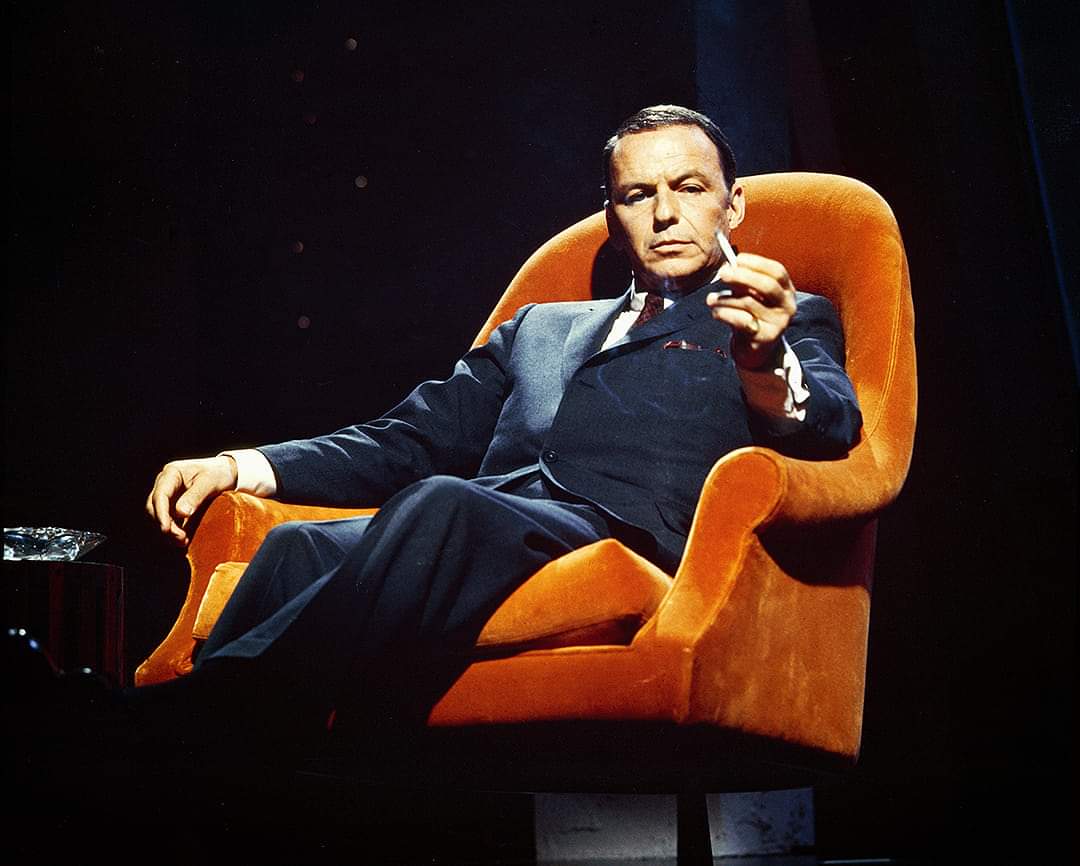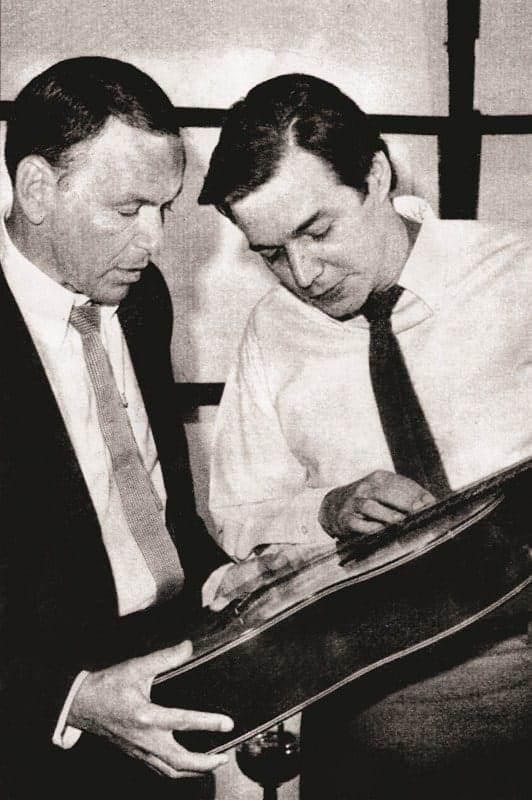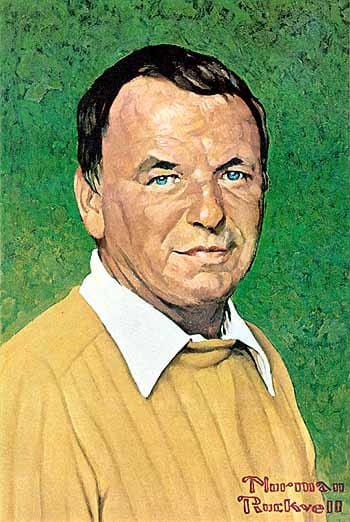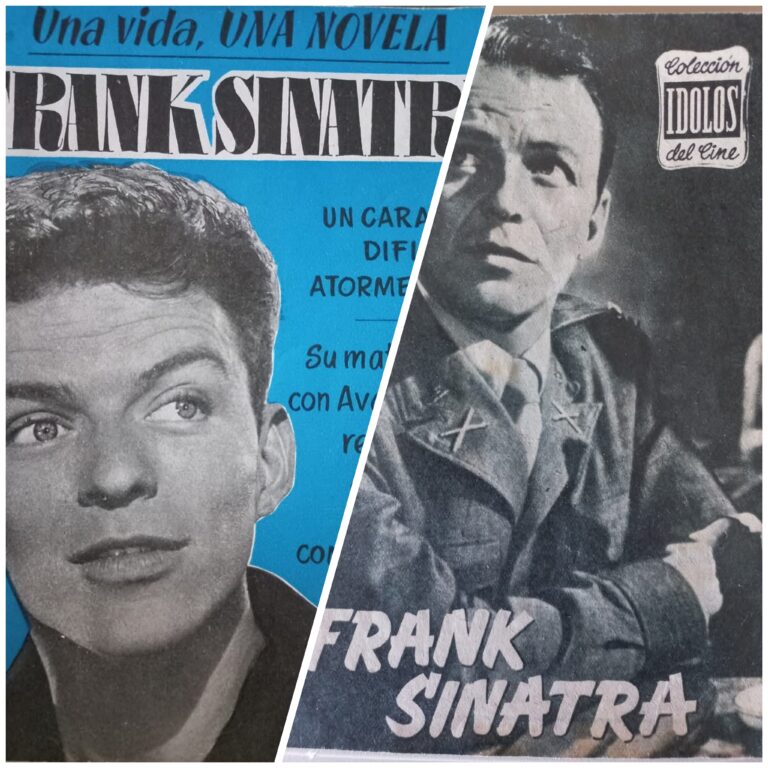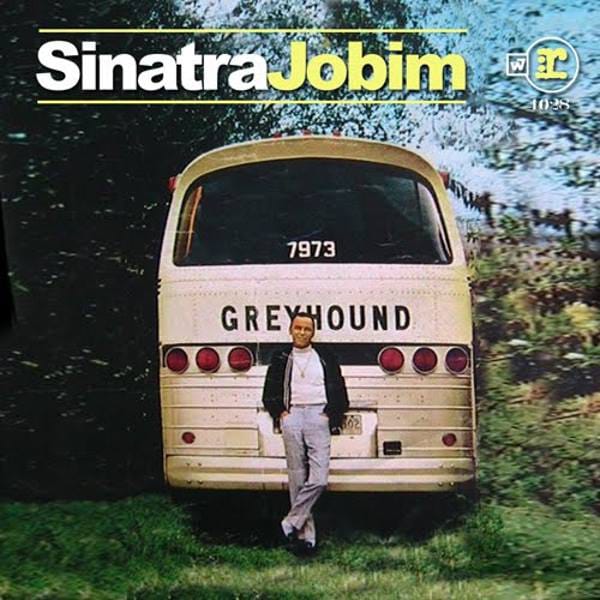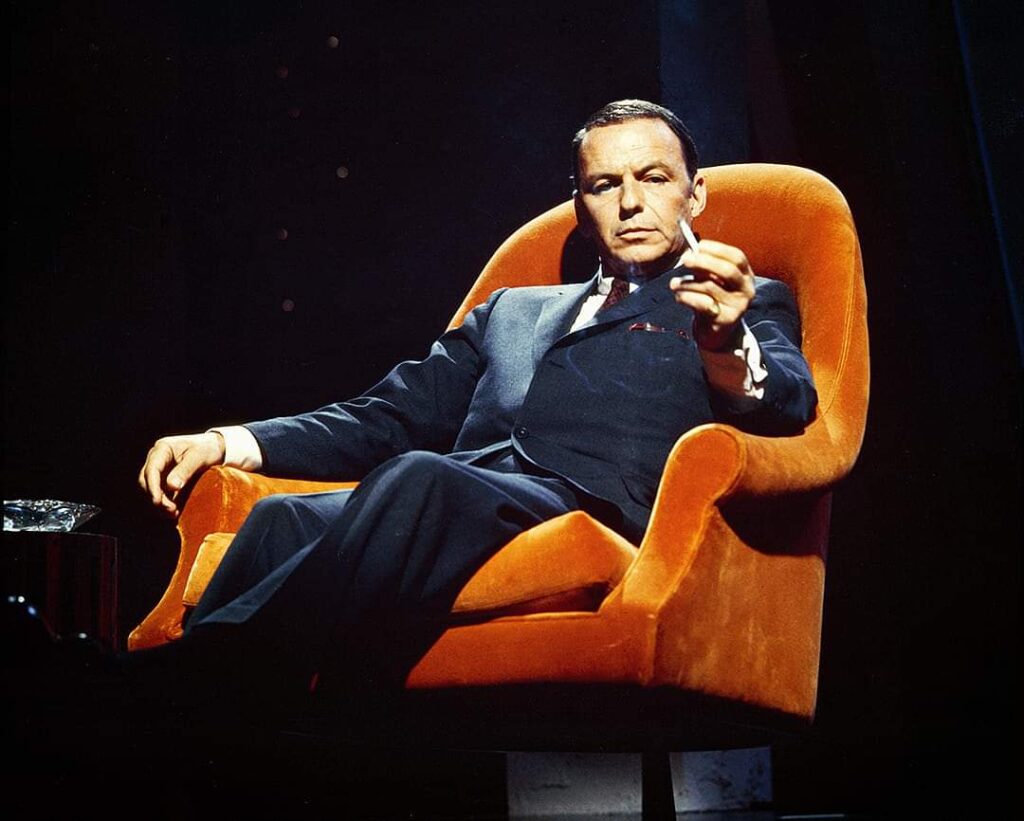
ANALYSIS OF THE TV SPECIAL
“A MAN AND HIS MUSIC II” (1966)
A MAN AND HIS MUSIC II. HISTORIC CONTEXT
In 1966 the surname Sinatra would have an unexpected role in the music charts. On February 19, Nancy Sinatra, after five years of unsuccessful attempts to succeed in the business, reached number one in the United Kingdom with “These boots are made for walking“, and a week later the conquest was repeated in the United States. Nancy’s songwriter and producer Lee Hazlewood indicated that she was supposed to sing the song as a 16-year-old girl who has been dating a 40-year-old man.
The theme gave Nancy an image of a modern, attractive woman with character. There are those who say that success led Frank – who appeared in concerts and on television as “Nancy’s dad” – to look for a more modern feel for his records.
Well, Nancy’s dad was doing his grown-up things, enjoying his first number one on the easy listening records with “It was a very good year” and giving some of the most extraordinary concerts at the Sands Hotel in Las Vegas. of his career with the Count Basie Orchestra. But he also fervently wanted to have great commercial success again, since his last top ten hit was in 1958. His producer at the time, Jimmy Bowen, offered him a melody by the German Bert Kaempfert with lyrics by Charles Singleton, “Strangers in the night “, a song that Frank hated from the first moment, but agreed to record it to fulfill his goal of returning to the front line of pop. After being published, “Strangers in the night” topped the charts in the United States, displacing the Beatles‘ “Paperback writer.” In the United Kingdom, Frank took the throne from the Rolling Stones.
THE PROGRAM
A Sinatra motivated by success went, between June 5 and 6, 1966, to the NBC studios in Burbank, California, to film the sequel to the splendid “A man and his music“, a program that has been the subject of a recent analysis on my part. Given the victory obtained, it is logical that the scheme and work team be repeated; Once again there are Nelson Riddle and Gordon Jenkins conducting the orchestra and Dwight Hemion in the production. The novelty in this new edition is the strategic presence of Nancy Sinatra as a guest star.
The repertoire proposed by Frank reflects the intention of renewal and no longer relies so much on his great successes of the past. The show is dedicated to musicians, and as such songs are chosen that have rich and complex instrumentation in which the members of the orchestra can shine. The notable presence of the Hammond organ in Nelson Riddle’s arrangements is striking, in the image and likeness of the successful LP “Strangers in the night”, which gives the songs an irresistibly kitsch touch. The aesthetic workmanship is impeccable and gives us truly unique snapshots. I even like it better than the 1965 special. The show aired on CBS on December 7, 1966, received nine Emmy nominations and won for best sound recording.
THE REPERTOIRE
“Fly me to the moon.”
A short instrumental introduction created for the occasion precedes the classic immortalized by Frank and Count Basie on the album “It Might As Well Be Swing” in 1964. Sinatra has an imposing stage presence and sings with overwhelming power. During the instrumental bridge, she steps off the stage and heads to a lectern situated in the middle of the majestic orchestra conducted by Nelson Riddle, where she ends the piece surrounded by waves of energy from the instruments. That space is, like no other, her natural element, she enjoys it enormously and manages to transmit it through the screen and the more than 50 years that have passed since the recording.
“The most beautiful girl in the world.”
An old Rodgers and Hart lady born in 1935 who Sinatra and Riddle “have bought a new dress for.” The super-vitamined and mineralized arrangement turns this waltz into a crazy swing that leaves musicians and singers breathless. The sequence is really exciting and can be classified among the five best in The Voice’s visual archive; the hands of that percussionist in the background flapping wildly like the wings of a hummingbird, the trombonists barely having time to turn the pages of the score, Frank completely carried away by the sonic gale, cheering the orchestra on with voices and clapping during the instrumental bridge, the violinists are wonderfully precise and synchronized archers… the only ones who seem to keep calm in the eye of the hurricane are Nelson and drummer Irv Cottler. Synatrically Perfect.
“Moonlight in Vermont”
A song that, as Frank says when introducing it, is a tranquilizer for the soul stiffened by daily tensions. The stellar work of Carl Suessdorf and John Blackburn is an unusual song composed of haikus that do not rhyme with each other and that, however, make up one of the most beautiful and poetic pieces of the great American songbook.
“YOU’RE NOBODY ‘TILL SOMEBODY LOVES YOU”
In this song Sinatra sings about one of the great truths of life, the fact that one is nothing, or very little, if he has no one to love him. Frank was in love like a teenager with Mia Farrow, he felt loved by her, and possibly that emotion is the seed of the powerful interpretation that he offers us of this piece that he recorded in 1961 for his LP “Sinatra swings.” It is good to enjoy a magnificent arrangement by Billy May again, since he was not present in body and baton in any of the television specials of The Voice.
“BANG BANG”, “ON BROADWAY”, “YES SIR, THAT’S MY BABY” & “MEDLEY DOWNTOWN/THESE BOOTS ARE MADE FOR WALKING”
It’s Nancy Sinatra’s turn, who delivers a charming performance and proves to have genetic magnetism. The boss’s daughter performs with a stylized and minimalist version of “Bang Bang“, a song written by Sonny Bono and popularized by Cher. Nancy closed her second LP “How does that record you?” with this melody, a work of higher quality but commercial performance much lower than that of her predecessor, “Boots“. His reading of “On Broadway“, the hit of The Drifters, opened his third LP, “Nancy in London“, his interpretation is deliberately sexy and light, and after it he gives way, with the verses of a song, to “his daddy “.
Together they star in a nice medley that may be cloying for many, and musically there is nothing worth mentioning, beyond the fact that Sinatra sings some fragments of two songs included in his most recent LP, “Strangers in the night“, but it is a pleasure to see the chemistry between them and how proud Frank is of his little girl. With this she ends the first part of the show.
“MEDLEY: JUST ONE OF THOSE THINGS/MY HEART STOOD STILL/BUT BEAUTIFUL/WHEN YOUR LOVER HAS GONE”
The medley orchestrated by Gordon Jenkins takes us on a more gloomy journey than that of 1965. If on that occasion we travel through the ages of love, here we are subjected to the ordeal of an impossible relationship, so hot that it consumes itself. It could well be an elegy for her marriage to Ava Gardner.
The common thread is “Just one of those things“, a song written by Cole Porter for the musical “Jubilee” (1935) and which Sinatra included, with a completely different arrangement, on the LP “Swing easy” (1954).
Frank appears sitting in an armchair, smoking a cigarette, staring at the ceiling, in the middle of the darkness of a room barely illuminated by the nocturnal indigo that filters through a large window. The song plays in voiceover, expressing the singer’s thoughts. The first stop leaves us on the porch of a house, perhaps where he met his lost love. Sinatra performs “My heart Stood Still“, a clear example of the weight that the orchestral arrangement has in a song; When he recorded it with Nelson Riddle’s wonderful orchestration for the LP “The Concert Sinatra” (1963), the Rodgers and Hart classic was an inflamed poem, kneeling on the ground, looking into the eyes of the beloved; in Jenkins’ score it is transformed into a requiem for the feeling not expressed in time.
Next, the music and cigarette smoke take us to what could be a cafe, the same one used on first romantic dates. Sitting at a table, with a red rose in his hand, he rapturously sings “But beautiful“, a glossary of the petals and thorns of love. After an overwhelming instrumental bridge, we see Frank in a luxuriously decorated room, in front of a window that allows us to see the city in its evening dress. He sings a desolate and deep version of “When your lover has gone“, a song that received its definitive version on the LP “In the wee small hours” (1955), but which had been in the voice’s repertoire since 1944. To conclude , the last verse of “Just one of those things” sounds, ghostly, as he lights another cigarette. The coda is sad: “So goodbye and amen, I hope we see each other from time to time. It was a lot of fun, but it was just one of those things.” It is impossible not to think that Frank, the man, was trying to close an unfortunate chapter of life through the voice of Sinatra, the musician.
“LUCK BE A LADY”
A deliberately old-fashioned orchestral fanfare serves to open the third and final part of the show, which takes off in style with Frank dressed in a tuxedo and Nelson Riddle leading the orchestra. This song was written in 1950 by Frank Loesser for the musical “Guys and Dolls“, whose 1955 film version starred Marlon Brando and Frank Sinatra. Frank did not sing the song in the film, but he made amends by recording it in 1963 for the album “Reprise Repertory Theater” with the amazing arrangement by Riddle. It is one of the emblematic songs of The Voice, which is brilliantly executed. The dice have undoubtedly rolled an eleven.
“THAT’S LIFE”
Perhaps the most interesting moment for Sinatra fans, since we have a version considerably different from the studio recording. It should be remembered that the show was filmed in June and “That’s Life” was recorded in October, with an orchestral score by Ernie Freeman. Nelson Riddle’s arrangement, which was never preached again, delivers a slower, more bluesy song, with a jazzier organ line and without the female choir; Likewise, Frank’s approach is different, lacking the characteristic biting touch of the studio master. I won’t say it’s a bad version, but the one that opens the LP of the same name is simply unbeatable.
“GRENADE”
We return to an overwhelming arrangement by Billy May for the LP “Sinatra swings” from 1961. Agustín Lara composed this song for Pedro Vargas in 1932 without having set foot in the Andalusian city. A classic that has been sung from Jorge Negrete to Luciano Pavarotti and that Sinatra enjoys enormously, finishing off a sanguine and theatrical version, with an effeminate final pose included.
“MY KIND OF TOWN”
This piece by Sammy Cahn and James Van Heusen appears again, which marked one of the best moments of the 1965 special. Here Frank includes the opening verse, which was omitted on that occasion, but in a different version than the studio recording : “From coast to coast, here’s to every city, from Boston, Massachusetts to Memphis, Tennessee. I hope my friends in old Saint Louis aren’t mad, but there’s one city I’d rather see.” Frank displays a powerful interpretation of the song with a small but irritating failure at the end, when the singer and orchestra do not finish in unison. It must be said that it is not Frank’s fault but Nelson’s fault who signals the end to the orchestra without paying attention to the singer.
“ANGEL EYES/PUT YOUR DREAMS AWAY”
The end of the show is identical to that of 1965, with a few verses from “Angel Eyes“, the introduction and thanks to the orchestra directors and, on this occasion, to his daughter Nancy, before singing the old “Put your dreams away” . As a final icing on the cake, a message for his good friend Dean Martin: “Keep writing letters, old friend, because I would like to hear from you“
CODA
You can say that 1966 was a good year for Frank. It once again had some commercial relevance. In fact, the success of the special caused the single “That’s Life” to reach fourth place on the charts on Christmas Eve 1966, with Nancy and hers “Sugar Town” at sixth. On a personal level, he married Mia Farrow, and for a brief period of time he knew marital happiness. As the 1960s entered its second half, Sinatra’s personal and professional life would be shaken by stark contrasts.
By Mahnuel Muñoz https://www.facebook.com/mahnuelmunozoficial
If you want to visit more articles about the life of Frank Sinatra enter the following Sinatra Radio 24h link: https://sinatraradio24h.com/category/articles/
We remind you that you can also listen to Sinatra Radio 24 hours on your mobile phone by downloading our free applications for Android in the Play Store https://play.google.com/store/apps/details?id=sinatra.radio24h

